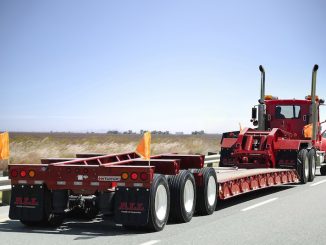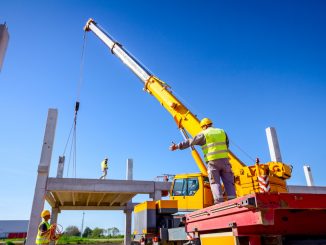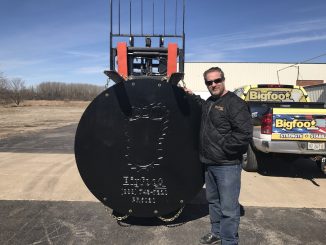View the complete article here.
A big part of construction is hauling things around like rock, dirt, material, and equipment. Sometimes it’s just moving stuff around the job site. Other times it’s transporting giant equipment across state lines – or across oceans. In this article we discuss the different types of hauling equipment.
Trucks
There are many different types of trucks used in construction. For small jobs a pickup truck is often sufficient for hauling around equipment. Other types of trucks include:
Dump Trucks
Dump trucks are typically used to haul excavated material – like rocks and dirt – off the job site. A bed is mounted to a chassis or base frame. They have steering axles in the rear and front. Additional axles are added to handle heavier loads. A low wheelbase makes standard dump trucks easier to maneuver. A hydraulic ram is used to raise the back of the bed. Material is dumped by raising the bed. Gravity causes the material to slide down through the tailgate, which is hinged and attached to the body of the truck.
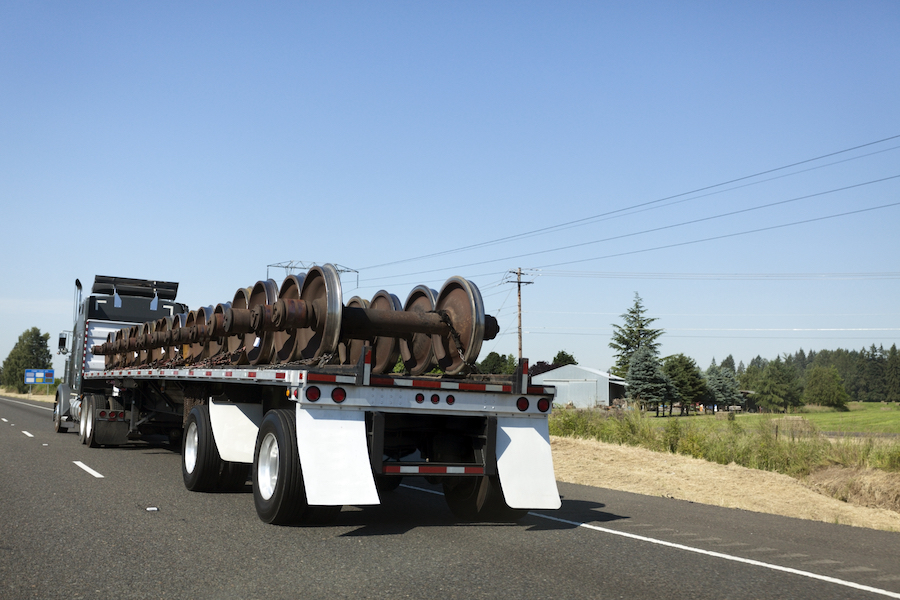
Flatbed Trucks
Flatbed trucks are simply trucks that haul a flat trailer. The lack of walls makes it possible to haul large, heavy, and even odd-shaped items. There may be restrictions on the weight and size of what you can haul. Loads must be properly tied down. This is why you should consider hiring a professional hauling company.
Cement Truck
Obviously, a cement truck can be used to haul one thing and one thing only – cement. But this specialized truck has to mix, haul, and pour. The constant spinning of the drum is handled by a separate motor. This mixes the material and keeps it from drying inside the drum. Typically, the cement needs to be poured within 90 minutes after mixing.
Cranes
When humans figured out how to take advantage of leverage, constructing buildings took a lot less time. But cranes are also used to haul many types of material on a construction site. Cranes fall into two broad categories: static (fixed) and mobile. Large, static cranes (such as tower cranes) are often used to haul building materials high in the air in the construction of tall buildings. Mobile cranes are attached to anything that can move, like trucks and barges, to transport material and equipment to job sites that are more difficult to reach. Popular cranes include:
All-Terrain
This type of mobile crane handles nearly any type of terrain. They have up to 9 axles. The supporting outriggers give all-terrain cranes the ability to lift very heavy objects – like precast concrete building segments.
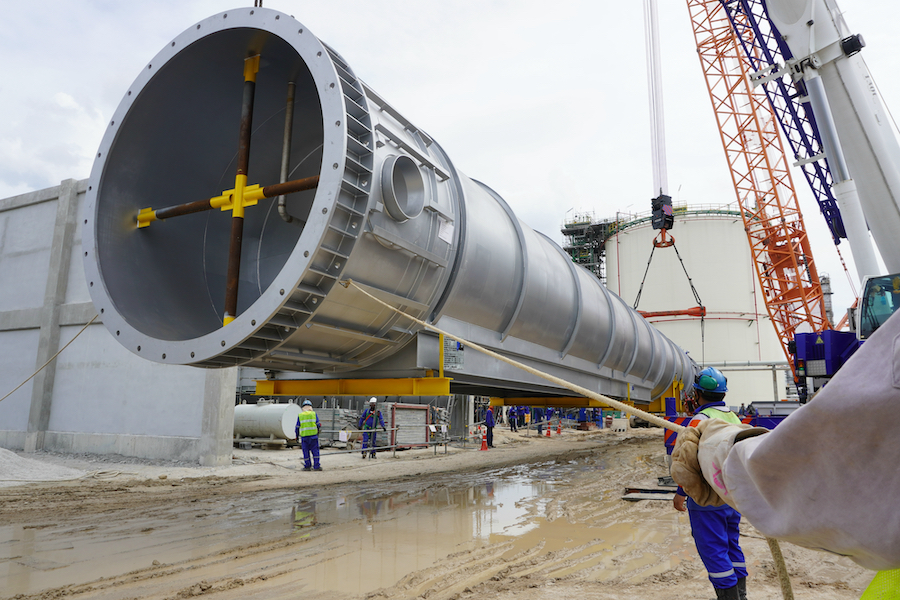
Self-Erecting
Self-erecting cranes are static. They lift a load vertically and place it horizontally. They take up less space and can be placed close to a structure. That’s why they are often used for city projects.
Truck-Mounted
Truck-mounted cranes are mobile, and a wide range of available attachments provide versatility. For example, you can make the standard 180-degree cantilever boom rotate 360-degrees with an attachment.
Excavators
Excavators are used in many different ways. They can demolish a building and then move the debris out of the way. They are often used to dig holes and trenches and haul and load what they excavate onto trucks. A standard excavator has a boom, stick, and bucket attached to the front. Its cab can rotate a full 360 degrees. There are specialized excavators such as draglines used in strip mining.
Loaders
You can use a loader to lift and move material around a job site. They are typically used to load materials such as sand, gravel, and dirt and move it onto a conveyor belt or into a dump truck. They may be wheel-based or on tracks. Which you use depends in large part on the terrain, the size of the job site, and the material you’ll be lifting and hauling. There several types of loaders, including:
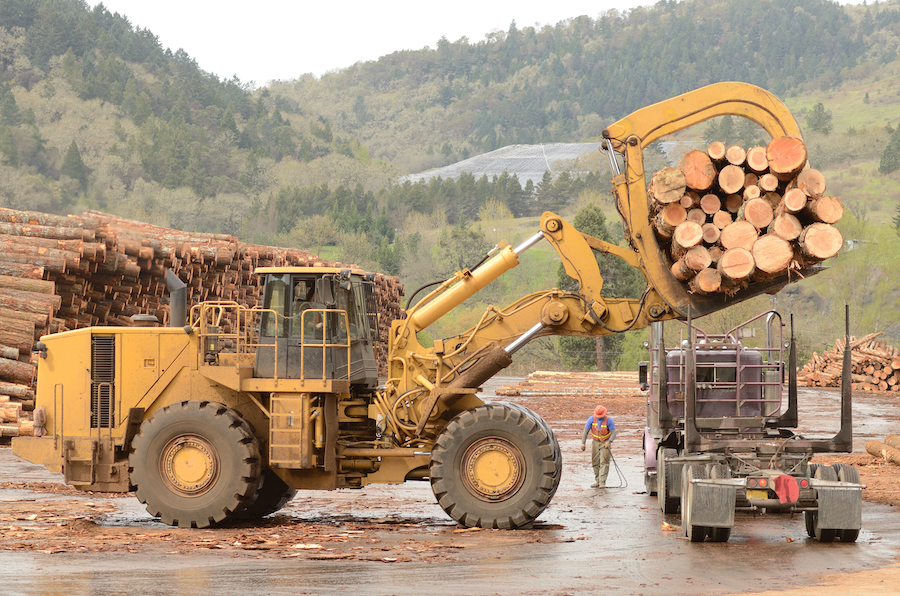
Backhoe Loader
Backhoe loaders have a hoe attachment on the back end of the machine. The loading bucket is in the front. Although the hoe has a bucket, it’s the loading bucket that can handle more material.
Wheel Loader
Wheel loaders are earthmoving machines on four wheels. They come in various sizes – compact, small, medium, and large. The buckets on small and compact wheel loaders can handle 1-2 cubic yards of material. Large wheel loaders can provide over 900 horsepower and buckets with a capacity up to 10 cubic yards.
Track Loaders
Track loaders are similar to skid steer loaders. They have excellent traction, which makes them more stable than a skid steer. Track loaders perform well on slopes and rough terrain. (Learn more in our article, The Key Differences Between a Skid Steer and a Track Loader.)
Shovels
Electric or hydraulic powered shovels can dig through extremely hard material. They are powerful enough to lift large boulders. Electric shovels have a revolving deck with a power plant. Hydraulic shovels work by providing pressure to the motor through an engine-driven pump.
Bulldozers
A bulldozer has a front-mounted dozer plate attached to a tractor. They are often used to break up hard soil or clear trees on a tract of land. A bulldozer can be wheel- or track-based. A track-based bulldozer is less likely to sink in muddy terrain.
Conclusion
There are many options for hauling. Which you select depends on many factors, including the size and shape of the material, how far you need to transport it, and the terrain the machine or vehicle needs to travel upon. Several types of machines can doze, dig, dismantle — then haul away the mess you’ve made. In some cases, it is best to hire professional haulers. For small jobs, throw it in the back of your pickup truck and drive away. When in doubt, contact your local equipment dealer.
View the complete article here.
What are the main types of trucks used in construction for hauling materials?
The main types of trucks include dump trucks for excavated material, flatbed trucks for versatile and large items, and cement trucks designed specifically for transporting and pouring cement.
What are the different types of cranes used in construction for hauling materials?
Cranes used in construction include all-terrain cranes suitable for various terrains, self-erecting cranes for space efficiency, and truck-mounted cranes providing mobility and versatility with different attachments.






































